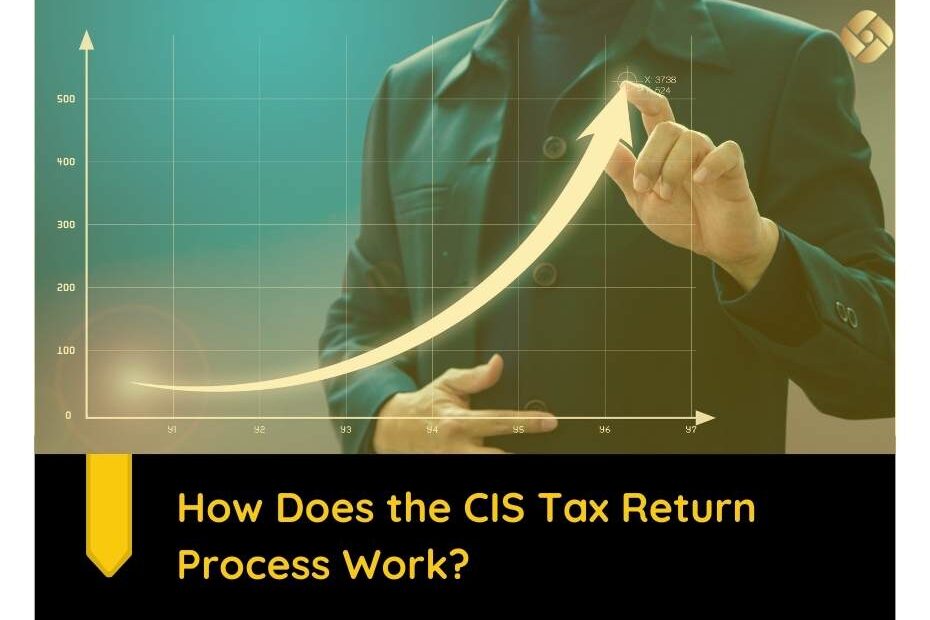The CIS tax return process helps contractors and subcontractors in the UK manage their tax payments efficiently. Established by the government in 1999, the CIS ensures that registered contractors pay tax at the source, making tax compliance straightforward. Under this system, subcontractors who register pay 20% tax on their income, while those who are not registered pay 30%, highlighting the benefits of proper registration. In this blog we will discuss that how does the CIS tax return process work.
At SAS KPO Services, our CIS tax return outsourcing services are tailored to your unique needs. Whether you are switching to a new project or need help navigating CIS requirements, our expert team is here to handle all the paperwork quickly and efficiently. We ensure that all deductions are managed correctly, and payments are submitted to HM Revenue and Customs (HMRC) on time.
Steps to Take Before Submitting Your CIS Tax Return

Before submitting your CIS (Construction Industry Scheme) tax return, it’s important to follow these key steps to ensure compliance with HM Revenue & Customs (HMRC) and avoid costly mistakes. Proper preparation will help you complete your self-assessment smoothly and accurately. If you have any doubts, consider consulting a professional for guidance.
Collect Your Documents:
Gather all necessary paperwork, including invoices, receipts, and bank statements, to have everything ready.
Check Your Deductions:
Review your eligible expenses, such as materials, equipment, and travel costs, and ensure you deduct them from your income.
Verify Subcontractor Details:
Confirm that all subcontractors are CIS-registered and that the correct tax deductions have been made from their payments.
Calculate CIS Deductions:
Determine the tax deducted from subcontractor payments accurately and ensure it matches what you have paid to HMRC.
Review Your Calculations:
Double-check all figures and ensure every section of your tax return is filled out correctly.
Meet Submission Deadlines:
Paper tax returns are due by 31st October, and online submissions must be completed by 31st January.
Following these steps will better prepare you to submit your CIS tax return with confidence. If you are unsure about any part of the process, seeking expert advice can save you time and prevent errors.
How the CIS Monthly Return Works?

Here in this paragraph we’ll provide the information about how does the CIS tax return process work.
Registering:
Start by registering for the CIS scheme with HMRC. You will need to provide your name, address, contact details, Unique Taxpayer Reference (UTR), National Insurance number, and your business structure (like whether you are a sole trader or part of a company).
Verification:
After registration, the contractor you work with will confirm your registration status with HMRC. They will check your UTR and other details to ensure everything is correct. This step determines how they handle your tax payments.
Income and Tax Deductions:
Your contractor will deduct tax from your payments and provide you with a monthly CIS statement. This statement shows how much you have earned and the tax deducted. Keep these statements for your records.
Keep Records:
Maintain accurate records of your income and any deductions. Save copies of your invoices, receipts for work-related expenses, and bank statements showing your income. This will help you when completing your CIS tax return process work.
Completing Your Tax Return:
At the end of the tax year (April 5th), you will need to fill out a Self-Assessment tax return. Include details about your CIS income, the tax already deducted, and any other income you have. You can also claim deductions for work-related expenses like tools, travel costs, and materials.
Balancing Payment or Refund:
After you submit your return, HMRC will work out your total tax liability. If the tax deducted was more than what you owe, you may get a refund. If it was less, you will need to pay the difference by January 31st. Make sure to pay on time to avoid penalties.
Navigating the CIS tax return process work can be tricky, so it is a good idea to get help from a tax professional or use accounting software to ensure everything is accurate and compliant with HMRC rules.
What to Do if HMRC Rejects Your CIS Submission?

If HMRC rejects your CIS tax return, it is important to address the issue before resubmitting. Here are some steps to check:
Verify Login Details:
Ensure you are using the correct Government Gateway user ID and password. Log in to the HMRC website to confirm your details.
Check Your UTR Number:
Make sure you are entering the correct 10-digit Unique Taxpayer Reference (UTR) number.
Confirm PAYE Reference:
Double-check that you are using the right PAYE Reference number.
Verify Supplier Information:
Ensure that your suppliers’ details are correct. This includes:
- Accounts Office reference number
- Subcontractor UTR number
- National Insurance (NI) number
- Verification number
Clean Up Entries:
Remove any special characters or extra spaces in the subcontractor/contractor’s name field. Use only letters (A-Z) and numbers (0-9).
By carefully reviewing these aspects, you can identify and correct any errors, increasing the chances of a successful submission.
Simplify Your CIS Tax Returns with SAS
Managing CIS tax returns can feel overwhelming, but you do not have to navigate it alone. At SAS KPO Services, we specialise in handling the complexities of the CIS process, ensuring your returns are accurate, compliant, and submitted on time. Whether you’re dealing with tax deductions, verifying subcontractors, or tracking allowable expenses, our expert team is here to make the process hassle-free for you.
Need more guidance on your CIS tax returns?
We’re here to help. Reach out to us at info@saskpo.co.uk, call us at +91 73838 71067, or visit our website to fill in the enquiry form for free, impartial advice. Let us take care of your CIS needs so you can focus on growing your business!
Shivani Soni (HR and Digital Marketing Specialist, Top Marketing voice) writes this blog
Frequently Asked Questions-
How often do you need to file CIS returns?
CIS (Construction Industry Scheme) returns must be submitted to HMRC every month. Make sure to send your monthly returns by the 19th of each month, covering the previous tax month’s activities. This regular submission helps keep your tax records up-to-date and compliant with HMRC requirements.
How can you correct errors on your CIS returns?
If you need to correct an error on your CIS (Construction Industry Scheme) return, you should contact the CIS helpline on 0300 200 3210. Calling this number is important because HMRC contact centers record all calls, providing a transcript of the conversation. This recording can help if a dispute arises about the details discussed during the call, ensuring both parties have a clear record of what was communicated.
How should I record CIS deductions?
To properly record CIS (Construction Industry Scheme) deductions, you need to pay the tax amounts you have deducted from your subcontractors to HMRC each month. Payments should be made by the 22nd of each month (or by the 19th if paying by post). When you pay a subcontractor, make sure to log the amount you owe to HMRC in your accounting system, specifically in the CIS Tax Liability Realised account (2502). This helps you keep track of all deductions made and ensures compliance with CIS rules, helping you stay organised and on top of your tax responsibilities.
What is CIS suffered?
CIS suffered refers to the Construction Industry Scheme (CIS) deductions that have been withheld from your payments by the contractors you work for. The CIS Suffered Report provides a summary of these deductions, showing how much tax your contractors have taken from your payments and paid to HMRC on your behalf. This report provides a detailed breakdown of all the deductions each contractor made over a specific period, helping you track the amounts withheld and manage your tax records accurately.
Is CIS the same as VAT?
No, VAT (Value Added Tax) is different from CIS (Construction Industry Scheme). HMRC set up CIS specifically for the construction industry to ensure that contractors and subcontractors pay the correct amount of Income Tax and National Insurance. Under CIS, contractors deduct money from subcontractor payments and pay it directly to HMRC as a tax advance.
On the other hand, VAT is a separate tax on the sale of goods and services. Under the CIS Domestic Reverse Charge (DRC) rules, it is the customer who accounts for the supplier’s VAT, not the supplier themselves. This means that the customer reports the VAT on their VAT return instead of the supplier, helping to combat VAT fraud within the construction sector.

